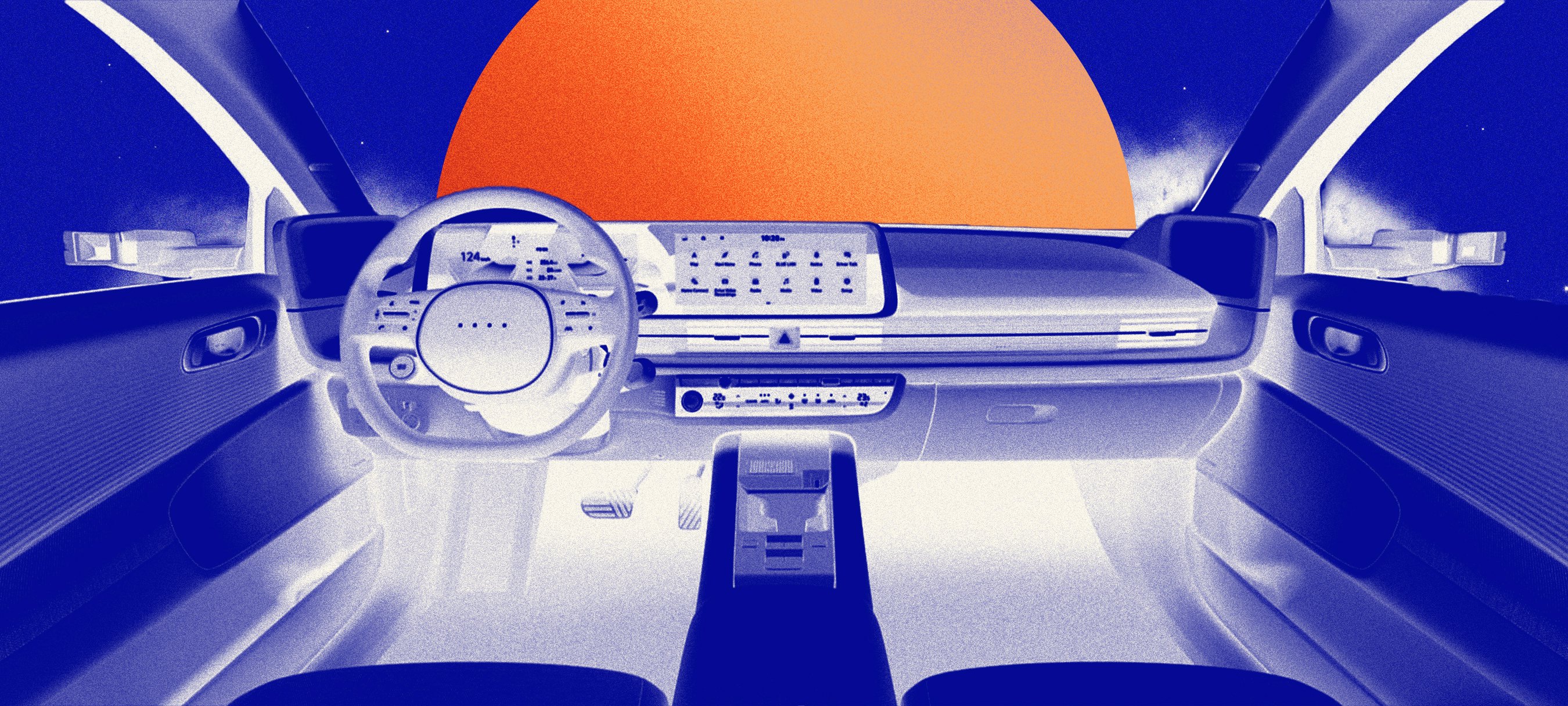
It’s no secret — cars are computers. And just like computers, we’re not buying for the wrapper necessarily, but the goodness inside. That seems apparent to the folks responsible for filling new cars with tech, because 2023 saw some exciting breakthroughs in that arena.
Predictably, some of that is down to increasingly cutting-edge infotainment systems, but for our list of best in-car auto tech, we’re also high-fiving systems that make you a safer driver — or that are very close to having the robots take over entirely. You’d be right to guess some of this shininess has only hit expensive rides, but not entirely. We’re reserving some gold stars for innovation that arrives at a more accessible sticker price, because a few brands are just more egalitarian (shout-outs to Subaru and Volvo), thank goodness.
BMW i7 xDrive60
31-Inch 8K Rear-Seat Display
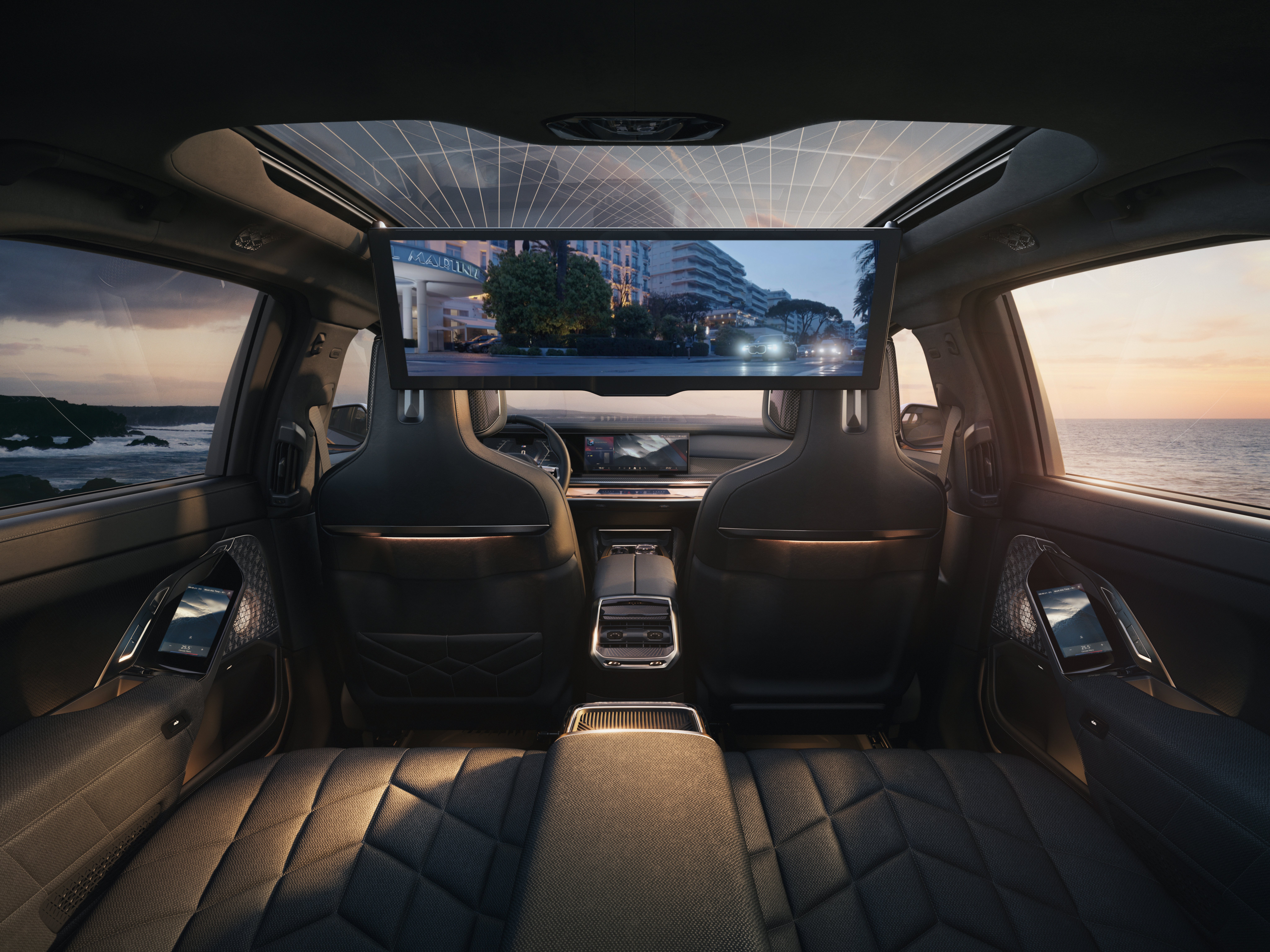
Outside of renting an RV, you’re going to be hard-pressed to find another vehicle with a drop-down, 31-inch, ultra-widescreen 8K display. This one folds neatly into the ceiling of the rear quarters and deploys when either outboard passenger decides they’ve had enough of the real world and want to marathon-watch The Bear through their chauffeured evening commute. Viewing is aided by auto-deploying rear- and side-window sunshades — and that means the fellow commuters in your eight-lane traffic jam can’t follow along as you catch up on Vox Machina.
Note: While you can stream via Amazon’s Fire TV, there’s also an HDMI input, and the latter is especially handy if your commute takes you in and out of 5G range.
Mercedes-Benz S-Class + EQS
Drive-Pilot Level 3 Autonomy
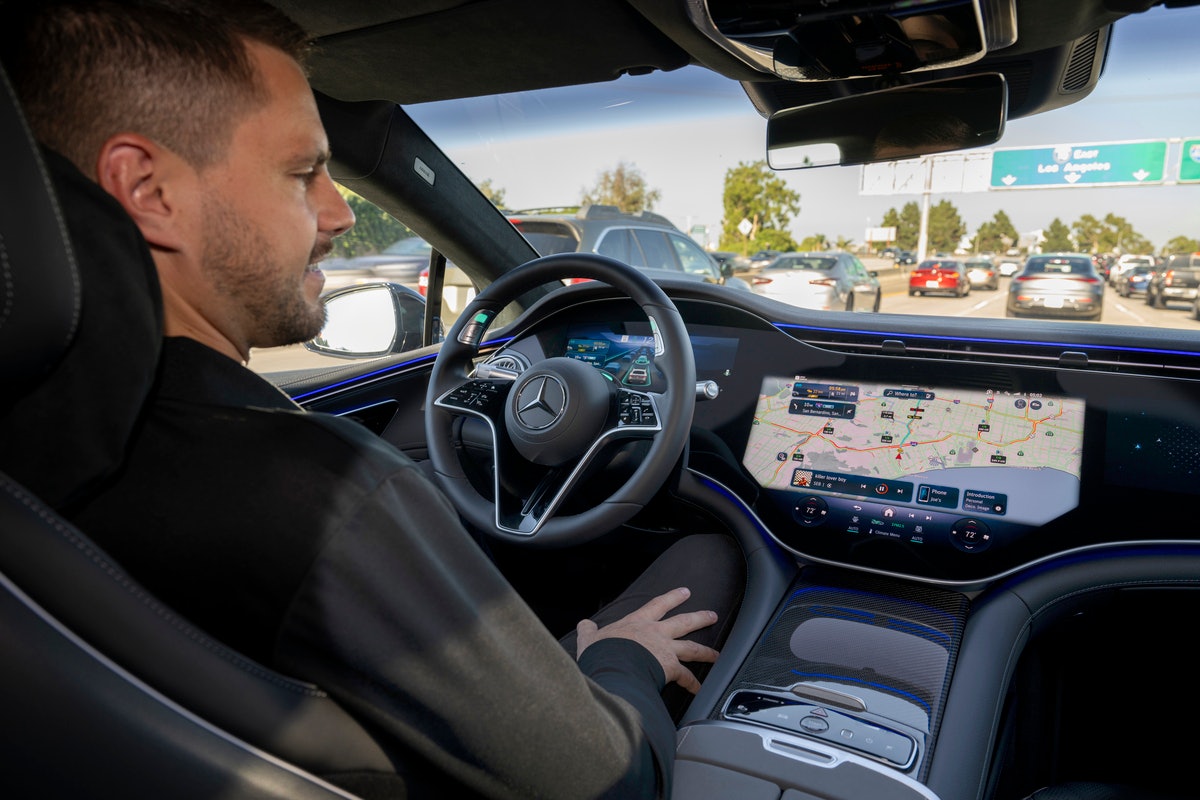
Mercedes-Benz is the first automaker in the United States to begin selling Level 3 autonomous driving vehicles. What does that mean? Basically, like those driverless Waymo taxis rolling through a few cities, these Benzes can drive themselves. The autonomous functions will work on select roads and highways (only in California and Nevada at first), and Mercedes is layering a lot of tech into its Drive-Pilot to be sure it functions well.
It added a rear-window camera to spy hazards from the back of the cars, wetness sensors to understand traction conditions, and even microphones that listen to noises around the car. Mercedes also says it’s using ultra-high resolution mapping to enable the vehicle to understand its location on roads down to just a few inches.
Genesis GV60
Ergo Motion Seat
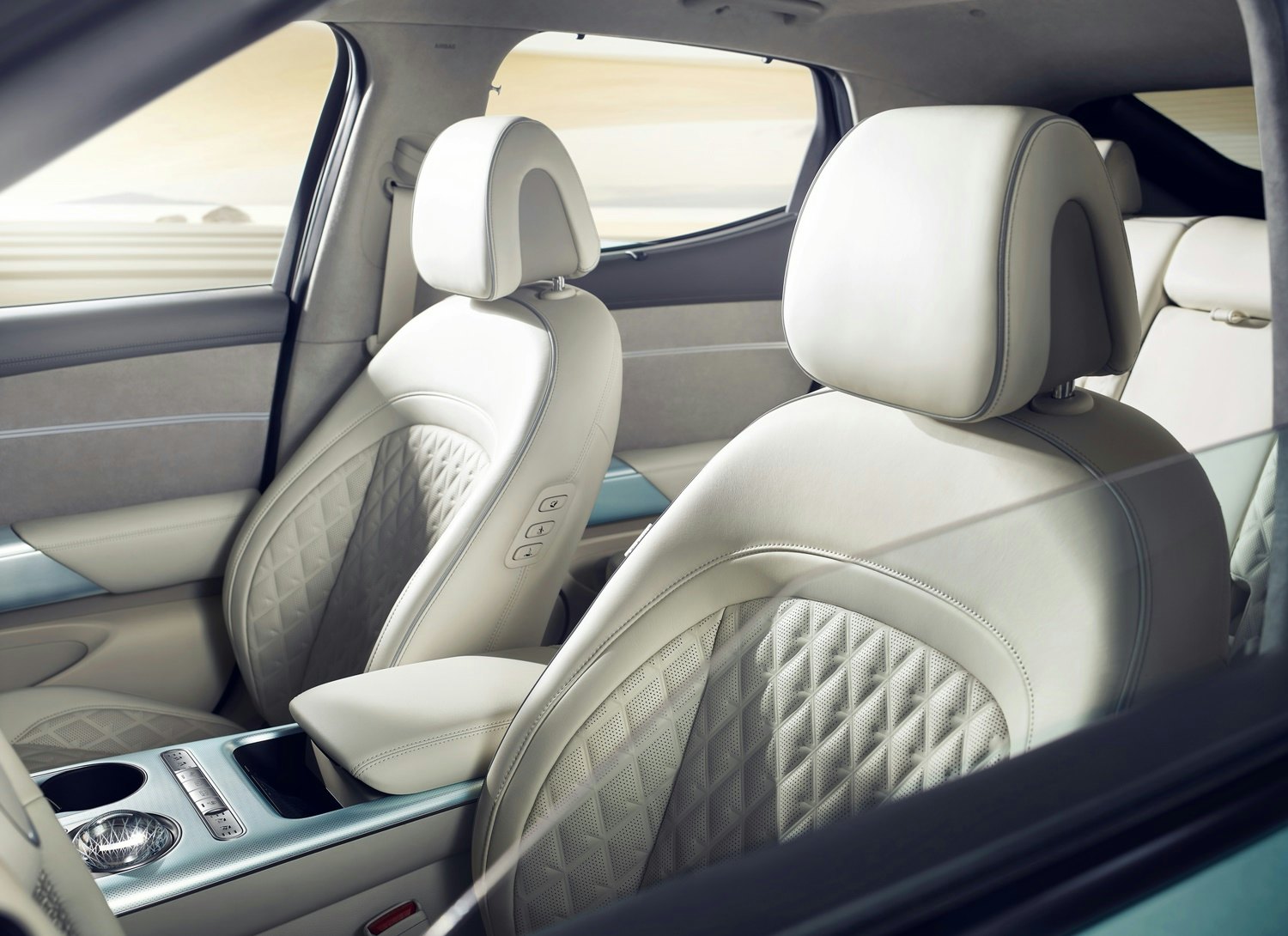
Genesis began experimenting with air systems in its seats a few years ago. The goal: make a thinner seat that leaves more rear legroom, without sacrificing support. In the GV60, seven air reservoirs fill and empty for support that’s customizable by each of the car’s drivers (kind of like a Sleep Number bed). Getting a bit tired behind the wheel? Select the “stretch” setting that moves the bags in sequence to encourage better posture while you get a massage.
Genesis GV60
17-Speaker Bang & Olufsen Sound System
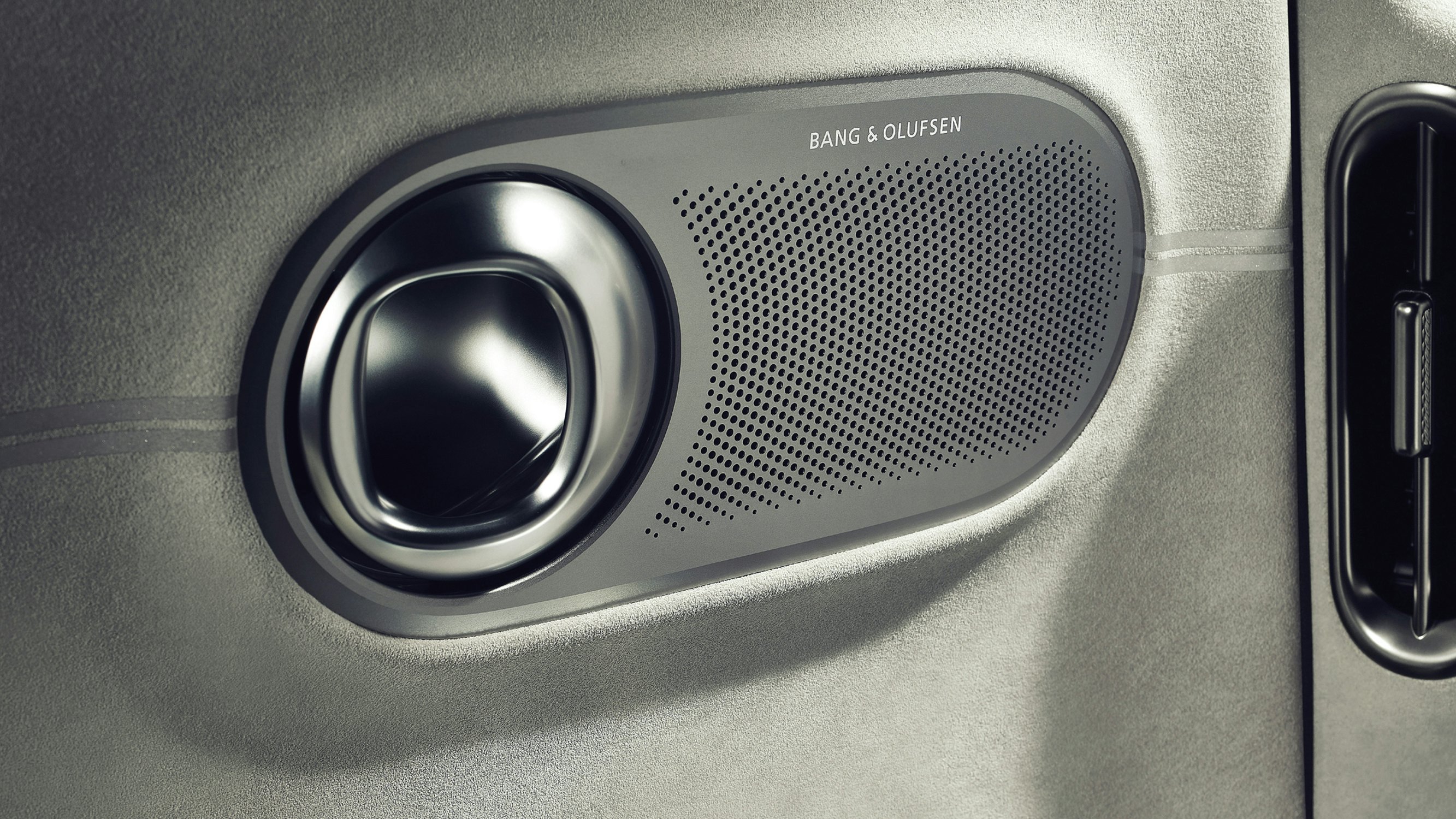
Yes, of course, the 17-speaker, 1,400-watt system crushes on both sound purity and punch, but the Red Dot design award winner is also beautiful. Door handles in the rear are incorporated into the aluminum speaker frames, and up front, the grilles hide midrange/tweeter speakers. With this many speakers, units obviously litter the entire cabin, including hidden midrange/tweeter combos in the dash and a subwoofer in the trunk. If you’re an audio nerd, pick “reference” mode, which enables you to hear your jams precisely as they were mixed in the studio.
Subaru Impreza
EyeSight 2023
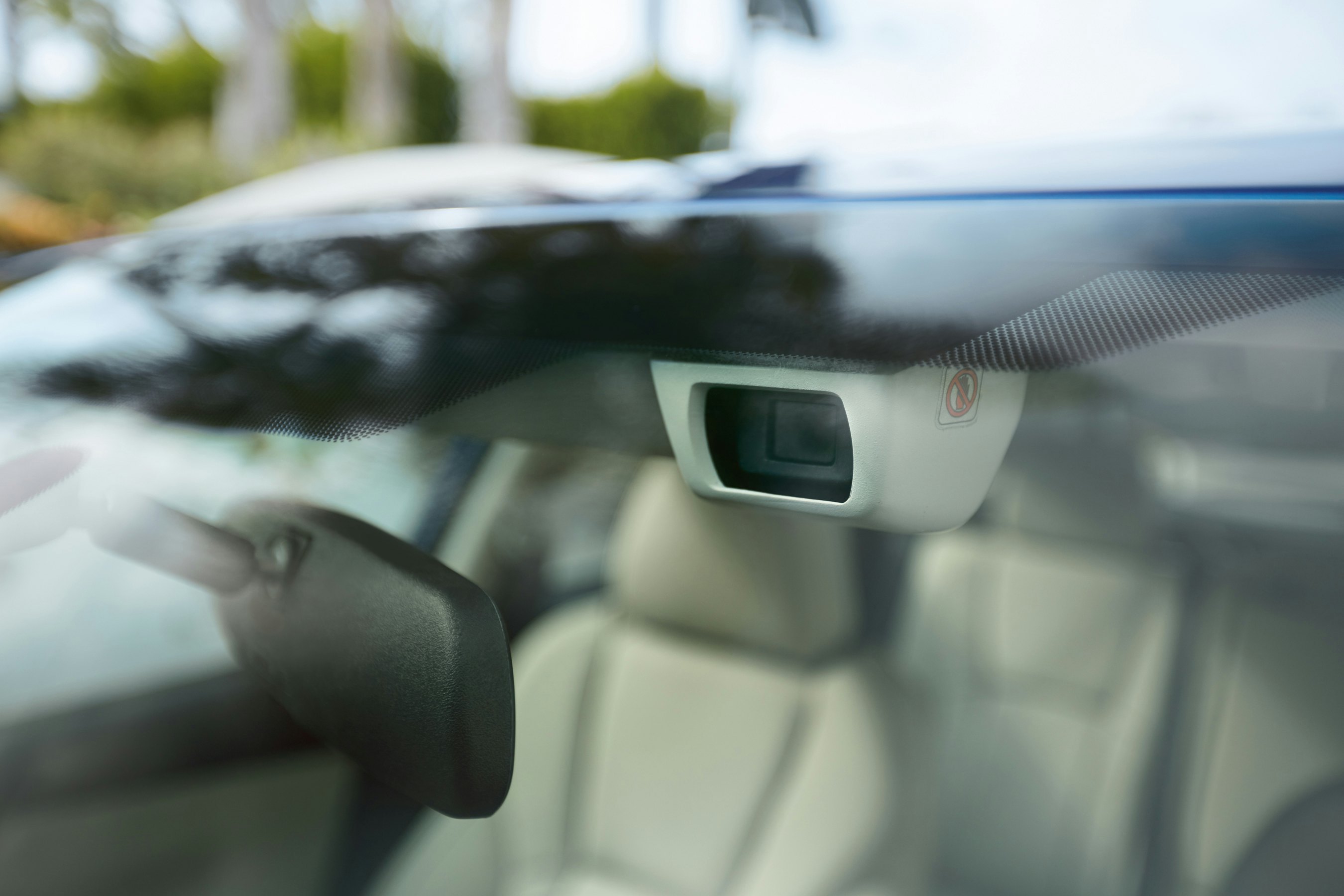
Subaru’s latest EyeSight system is simply one of the best and most intuitive driver-assistance packages on the market. The way it works is that a camera monitors you to make certain your eyes are on the road, while steering wheel sensors ensure you’re maintaining a grip on the steering wheel. Enable cruise control and EyeSight keeps a steady distance from the car ahead, and steers your Subie for you around corners. We’ve tested a lot of these systems, but they typically get very finicky or are so counterintuitive to engage that lots of buyers don’t even bother. EyeSight isn’t nearly that fussy, and the lane-keeping is excellent and truly will help a driver to stay perfectly on track, especially at night on a curvy road.
Mercedes-Benz EQE
Augmented Reality MBUX
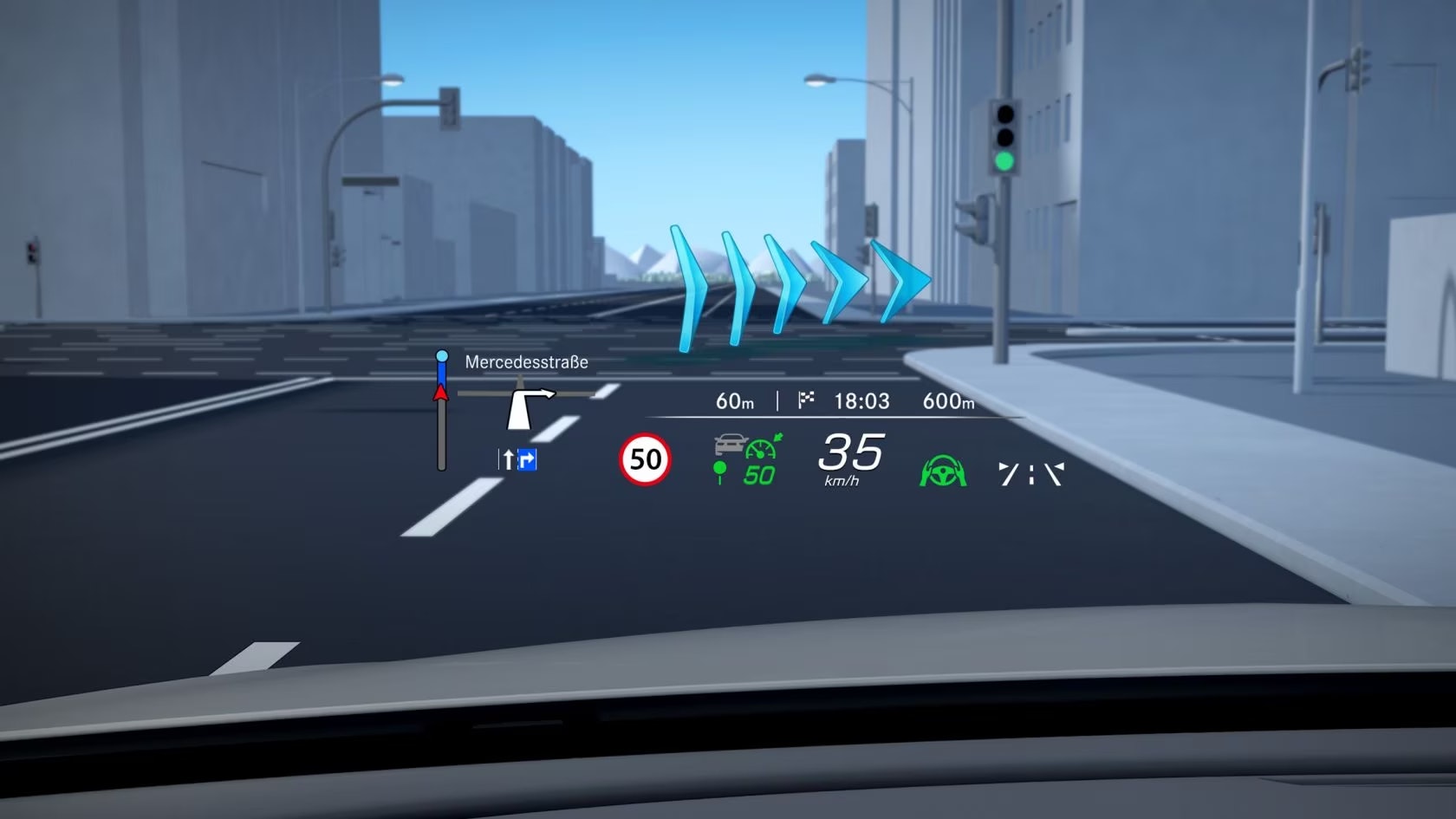
With its latest in-car OS, the carmaker has expanded its use of augmented reality for navigation on the electric EQE. The way this works is that the system superimposes directions in the heads-up display, so, like a hologram in your favorite Star Wars series, you see the arrows, street names, and other directions like speed limits superimposed in your field of vision.
In more complex driving scenarios these also pop up, so you see what to do right now, but also your subsequent turns, highway merges, etc. are superimposed farther ahead, allowing you to move into the right or left lane without too much urgency. We also dig that the system means you can listen to your favorite audio without constant navigation prompts interrupting, which is also preferable for your passengers.
Hyundai Ioniq 6
Carbon Neutral Cabin
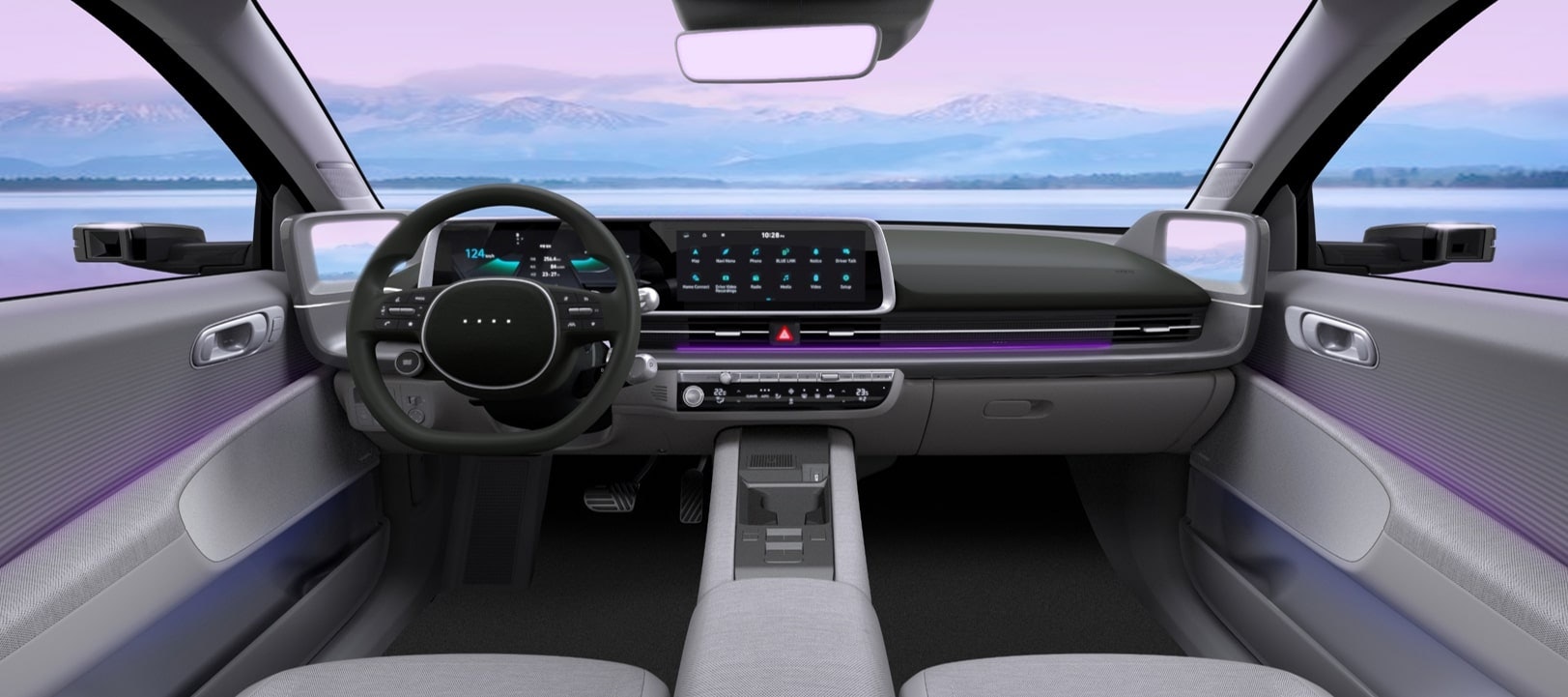
Chemical exposure from cars hasn’t been limited to tailpipe emissions. Car cabins have long used lots of chemicals for their construction, too, exposing passengers to years of off-gassing. Not here. Get the cloth seats with your Ioniq 6 and their surfaces are made from recycled plastic bottles.
The dash is produced from a kind of bio-plastic that enables it to degrade after the car no longer runs, and the headliner is also crafted from recycled plastic bottles. Even the carpets are woven using recycled fishing nets. All this makes sense, because what EV buyer isn’t concerned about the environment, especially their own?
Lucid Air
Climate Controls
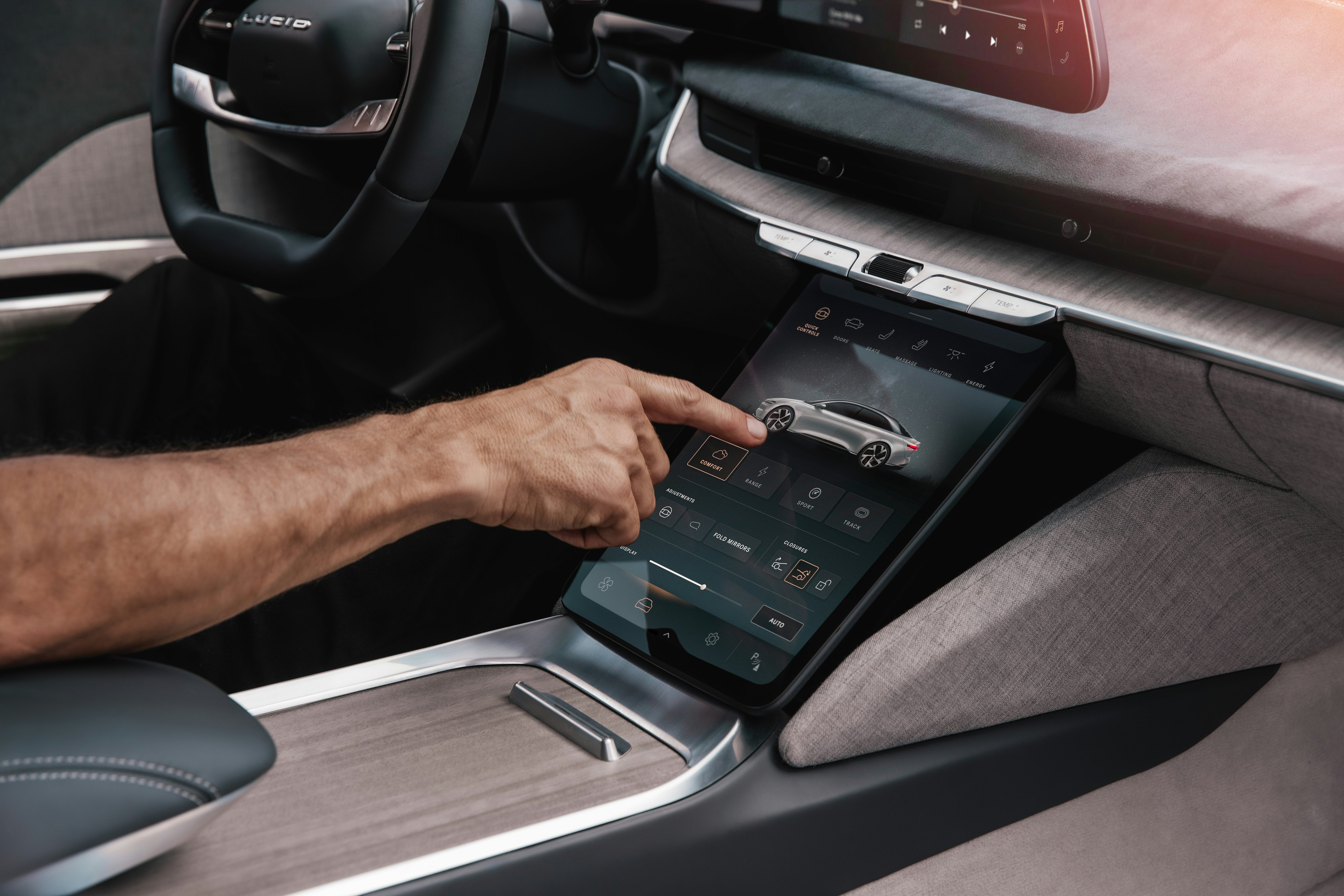
While we love the curved main screen that crowns the dash of the Lucid Air, a lot of luxury segment cars have that panoramic setup. But Lucid levels up with a secondary touchscreen that slides magically from beneath the center of the car’s dash, and it’s dedicated to climate and seat functions. The advantage is simple: You’re not left to hunt in the main display’s menu to adjust seat heating or cooling, and that leaves that main screen handy for infotainment functions. There’s nothing astonishing about this tech, it’s just smarter than what you see other automakers doing, and that makes it well worth the hat tip.
Volvo C40 Recharge
Android Automotive
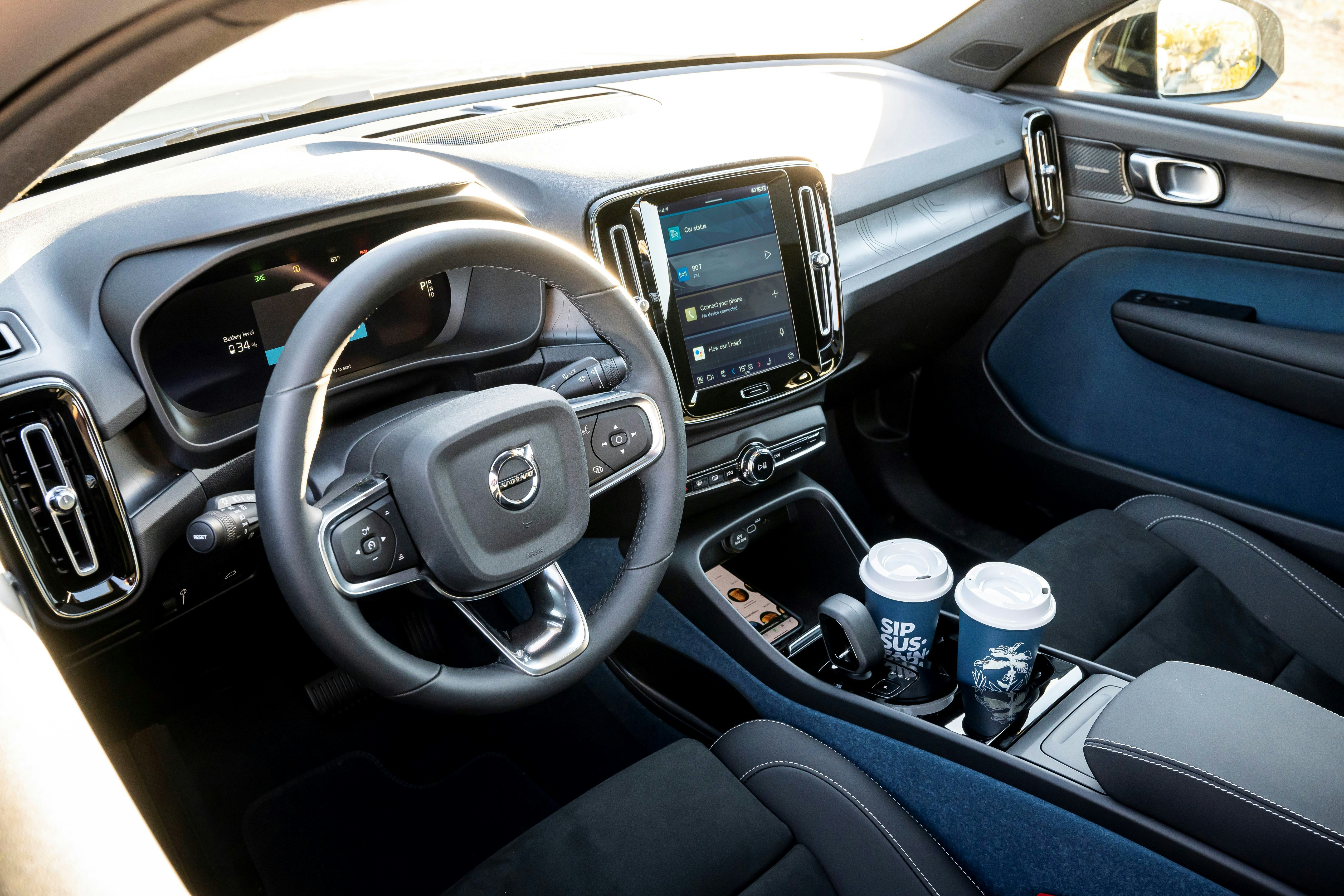
What’s so special about a car running Android software? Well, for one thing, speed — response time is dang near instant. And Google’s Android Automotive lets you order up just about anything you’d ask from a Google smart speaker at home. Sure, that means changing the Spotify playlist or reading you the latest news or asking for tomorrow’s weather, but it also means you can say “Hey, Google” to flip on your house’s porch lights and turn up your Nest thermostat. All of that is distinct from a car with the manufacturer’s OS that merely accepts an Android or iPhone pairing. Here, apps download to your car and live there, not on your phone. Think of it this way: The C40 Recharge is just like any other tech device in your life, such as a smart TV or a tablet. It’s just that carmakers haven’t been thinking this way — until now.
Jeep Grand Wagoneer L
Amazon Fire TV & McIntosh Sound System
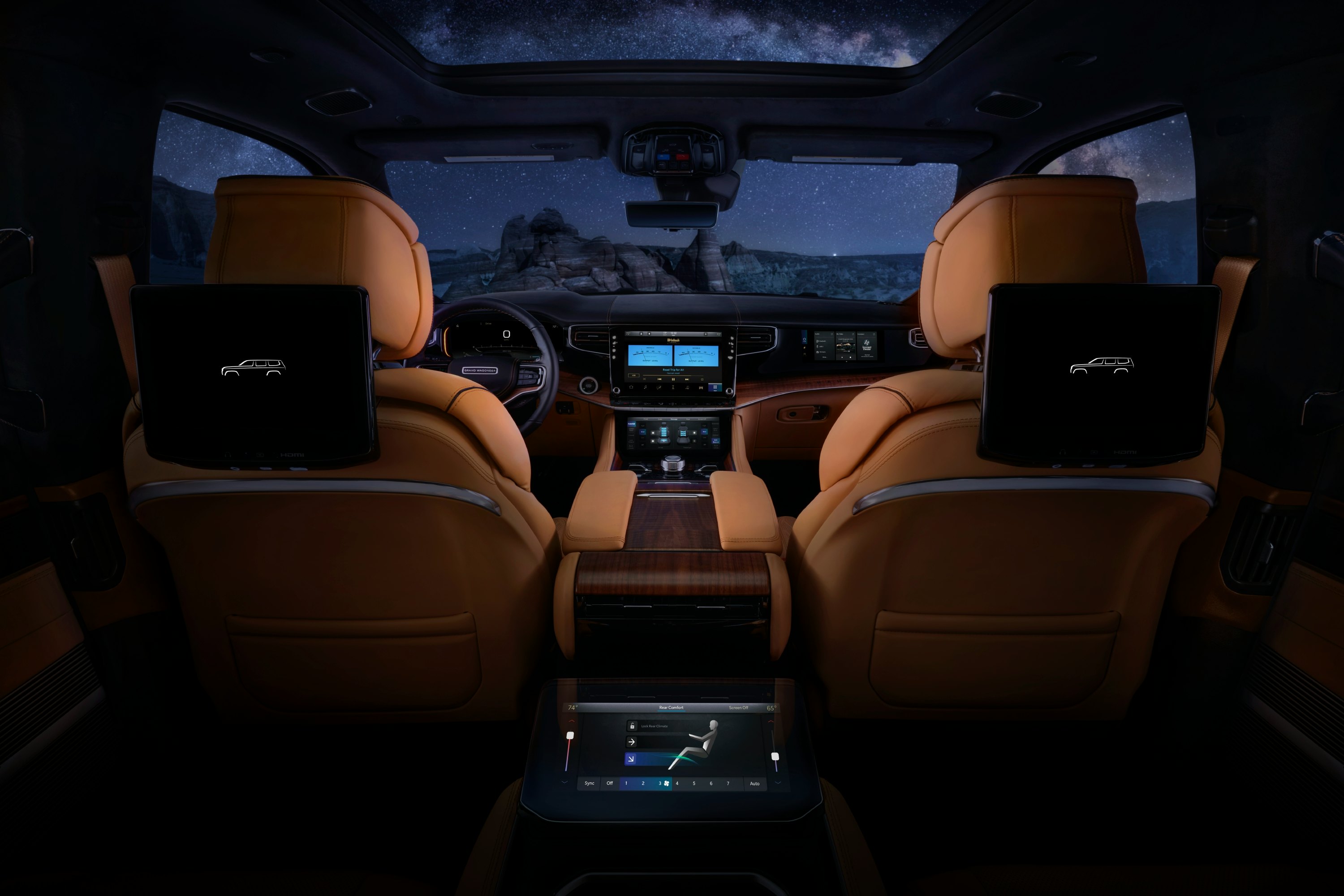
If you include the instrument cluster, center tablet, and all the other pixels, the Grand Wagoneer packs 75 inches of illuminated infotainment. But it’s the passengers who get to marathon-watch via HDMI or Amazon’s Fire TV for Auto. Anyone riding shotgun has their own display (with a privacy film, so the driver won’t be distracted by what’s on the 10.25-inch LED). Outboard rear seat occupants also get screens, and they can plug in gaming controls, too. Importantly, everyone can live in their preferred digital world (Bluetooth headsets pair to the entertainment), but parents up front can also disable access to the rear screens, in case your kid needs a tech time out.







